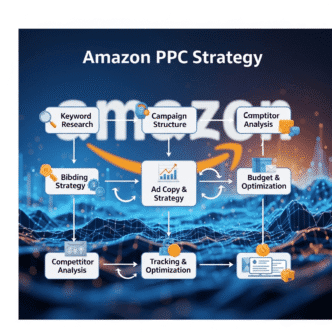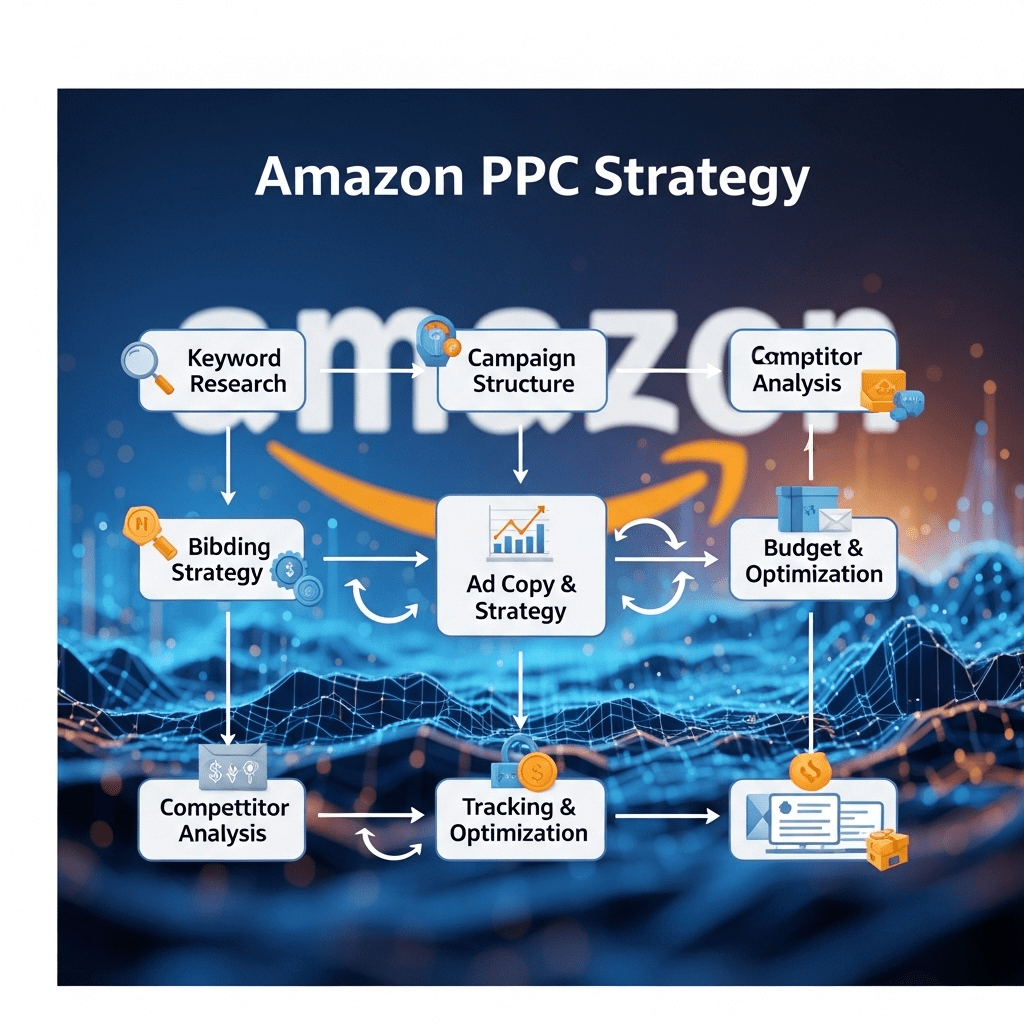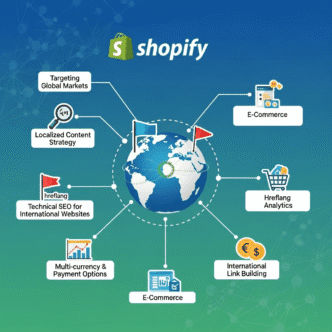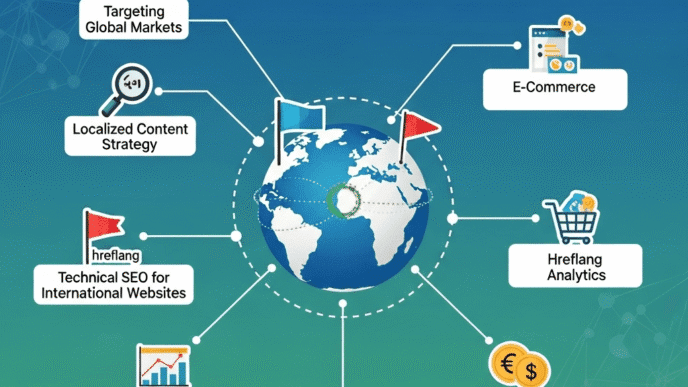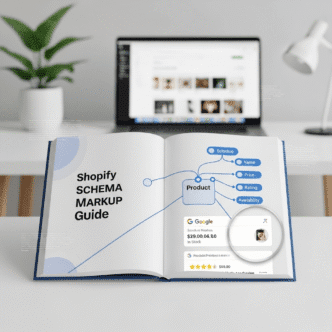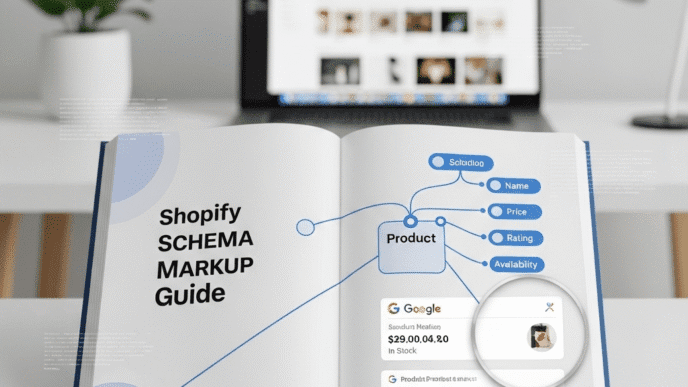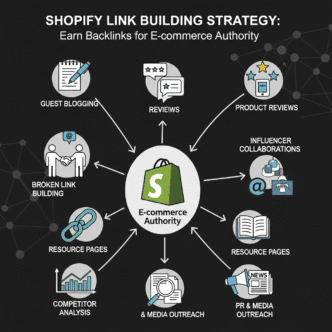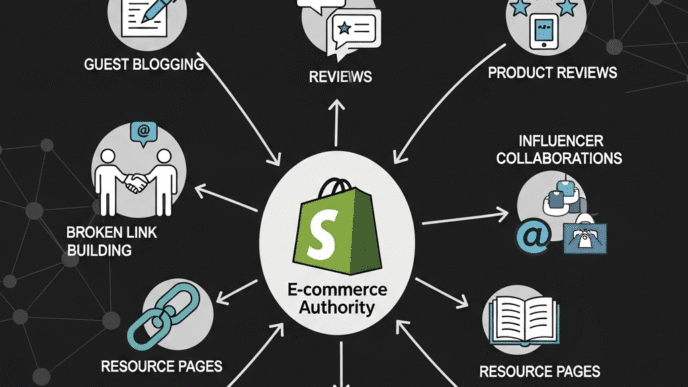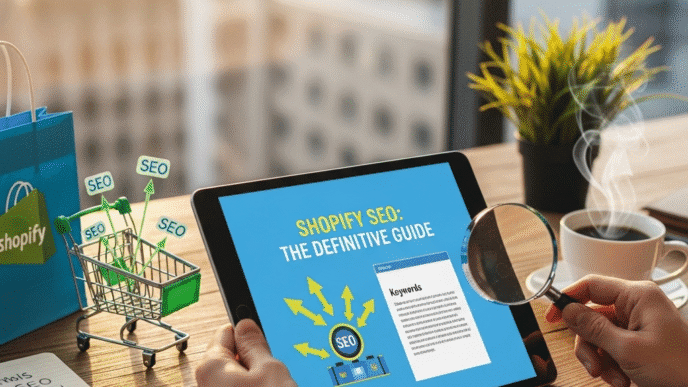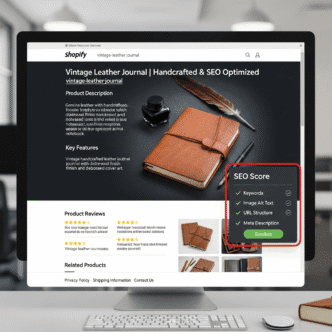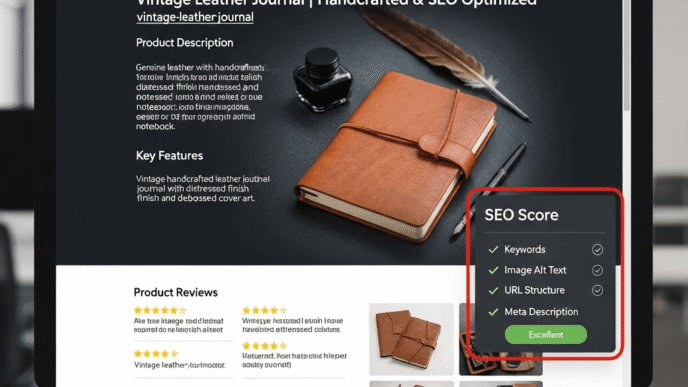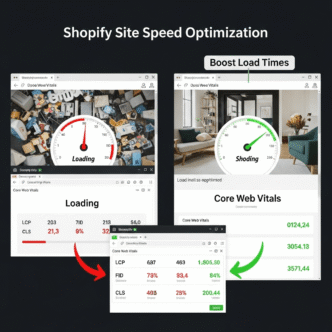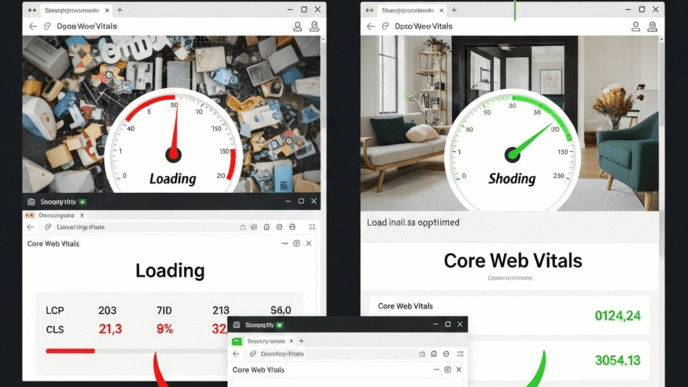You’re burning through $50 a day on Amazon ads. Your ACoS is sitting at 45%. Your organic rank? Still stuck on page 4.
Sound familiar?
Here’s the thing: Amazon PPC strategy isn’t just about throwing money at ads and hoping for sales. It’s a precise science that, when done right, doesn’t just drive immediate revenue—it builds long-term organic rankings that eventually let you reduce your ad spend.
In this guide, I’m walking you through exactly how to launch profitable Sponsored Products campaigns that generate sales today while building the ranking momentum that pays dividends for months. We’re talking about strategies that work in 2025, not outdated tactics from 2020.
If you’re ready to turn your PPC spend from a cost center into a profit engine, let’s dive in.
Table of Contents
ToggleWhy Amazon PPC Strategy Is Different in 2025
The Amazon advertising landscape has evolved dramatically. What worked two years ago might actually hurt you today.
Amazon’s advertising ecosystem now includes:
AI-powered bidding algorithms that learn from billions of customer interactions
Placement-specific optimization (top of search, product pages, rest of search)
Cross-campaign attribution models (your Sponsored Product ad might assist a Sponsored Brand conversion)
Integration with organic ranking factors (ad performance directly impacts BSR)
The old approach of “set it and forget it” is dead. Today’s successful Amazon PPC campaigns require strategic structure, continuous optimization, and integration with your overall Amazon SEO strategy.
The PPC-Organic Flywheel Effect
Here’s what most sellers miss: PPC and organic rankings feed each other.
When your PPC campaigns drive sales, Amazon’s algorithm sees velocity and relevance. This boosts your organic ranking. Better organic ranking means more organic sales, which further validates your listing. Eventually, you can reduce PPC spend while maintaining visibility.
This flywheel only works if you approach PPC strategically from day one. For the complete picture of how PPC fits into your Amazon strategy, check our comprehensive Amazon SEO guide.
What Are the Different Types of Amazon Sponsored Ads?
Before we dive into strategy, let’s clarify what tools you’re working with. Amazon offers three main sponsored ads types, each with distinct purposes.
Sponsored Products (Your Primary Weapon)
What they are: Ads that promote individual product listings in search results and on product detail pages.
Best for: Driving sales and building organic ranking for specific products
Where they appear: Search results, competitor product pages, related product sections
Pricing: Cost-per-click (CPC), typically $0.20-$3.00+ depending on category
This is where 80% of your budget should go, especially when launching new products.
Sponsored Brands (The Awareness Builder)
What they are: Banner-style ads featuring your brand logo, custom headline, and multiple products.
Best for: Brand awareness, showcasing product lines, protecting brand terms
Where they appear: Top of search results, prominent placements
Pricing: CPC, generally 20-40% higher than Sponsored Products
Only focus here once you have 3+ products and established momentum.
Sponsored Display (The Retargeting Tool)
What they are: Display ads that target audiences based on shopping behavior, both on and off Amazon.
Best for: Retargeting, competitor conquest, lifestyle targeting
Where they appear: Product pages, Amazon’s network, external websites
Pricing: CPC or CPM (cost per thousand impressions)
This is advanced territory. Master Sponsored Products first.
Pro Tip: For your first 90 days, focus 100% on Sponsored Products. Once you’re profitable there, expand to other ad types. Trying to do everything at once dilutes your budget and attention.
Campaign Type Comparison Table
| Campaign Type | Best For | Launch Priority | Typical CPC | Conversion Impact |
|---|---|---|---|---|
| Sponsored Products | New products, direct sales, ranking | 🔥 First | $0.50-$2.00 | ⭐⭐⭐⭐⭐ |
| Sponsored Brands | Brand awareness, multiple SKUs | ⚡ Second (3+ months) | $1.00-$3.50 | ⭐⭐⭐⭐ |
| Sponsored Display | Retargeting, conquest | ✓ Third (6+ months) | $0.30-$1.50 | ⭐⭐⭐ |
How Do You Structure a Profitable Amazon PPC Campaign?
Campaign structure is where most sellers go wrong. They create one campaign, throw in a bunch of keywords, and wonder why performance is inconsistent.
Profitable Amazon PPC campaigns require systematic organization. Here’s the exact structure that works.
The Three-Campaign Framework
Campaign 1: Auto Campaign (Discovery Phase)
Let Amazon’s algorithm discover which keywords and products convert for your listing.
Purpose: Gather data on what actually works
Budget: 20-30% of total PPC budget
Duration: Run continuously, mine for data monthly
Campaign 2: Manual Exact Campaign (Precision Phase)
Target your proven winners with exact match keywords.
Purpose: Maximum control and profitability on known converters
Budget: 50-60% of total PPC budget
Duration: Permanent, continuously optimized
Campaign 3: Manual Broad/Phrase Campaign (Expansion Phase)
Scale winning keywords with broader match types.
Purpose: Capture related searches and expand reach
Budget: 20-30% of total PPC budget
Duration: Add after you have 30+ days of exact match data
The 7-Day Campaign Launch Blueprint
Day 1-2: Auto Campaign Only
- Create one automatic campaign
- Set daily budget to $30-50 (adjust for your margins)
- Use default bids, then increase by 20% if no impressions after 24 hours
- Enable all targeting: Close Match, Loose Match, Substitutes, Complements
Day 3-7: Monitor and Adjust
- Check daily for ad spend and sales
- Look for early winners (keywords getting multiple clicks)
- Note which placement performs best (top of search usually wins)
- Don’t make changes yet—collect data
Day 8-14: Create Manual Exact Campaign
- Export Search Term Report from auto campaign
- Identify keywords with sales or high CTR
- Create manual exact campaign with these proven terms
- Start with same bids as auto campaign
Day 15-30: Optimization Phase
- Increase bids on high performers by 15-25%
- Decrease or pause keywords with 10+ clicks, no sales
- Add negative keywords for irrelevant searches
- Monitor ACoS daily, target weekly changes
Day 31+: Scale and Expand
- Create broad/phrase campaign for winners
- Add product targeting campaigns for competitor ASINs
- Test placement bid multipliers
- Begin reducing auto campaign budget as manual campaigns prove out
Pro Tip: Never launch multiple campaign types simultaneously. The data gets muddy and you can’t tell what’s working. Stagger your launches by 2-3 weeks minimum.
What Is ACoS and How Do You Optimize It?
ACoS (Advertising Cost of Sale) is the metric that determines if your PPC is profitable or not. Yet most sellers misunderstand how to use it.
The ACoS Formula
ACoS = (Ad Spend ÷ Ad Revenue) × 100
Example: You spend $200 on ads and generate $500 in sales = 40% ACoS
This means you’re spending 40 cents on ads for every dollar of revenue.
What’s a “Good” ACoS?
There’s no universal answer. Your target ACoS depends on your margins and goals.
Break-Even ACoS = Your Profit Margin
If your profit margin is 35% (after Amazon fees, COGS, shipping), your break-even ACoS is 35%. Anything below that, you’re profitable.
Different ACoS Goals for Different Situations:
New Product Launch (First 60 days): 50-80% ACoS is acceptable
You’re paying for visibility and ranking momentum, not just immediate profit. This investment pays off as organic ranking improves.
Established Product (Profitability Focus): 20-35% ACoS
You’ve got organic traction. Now optimize for profit.
Defensive Campaigns (Brand Protection): 10-20% ACoS
Bidding on your own brand terms is highly efficient because intent is already there.
Liquidation/Clearance: Up to 100% ACoS
Break-even or slight loss is fine if you need to move inventory.
The 5-Step ACoS Optimization Process
Step 1: Identify Your Profit Margin
Calculate exactly: Product Cost + Amazon Fees + Shipping + Storage = Your Costs
Revenue – Costs = Profit (this percentage is your target ACoS ceiling)
Step 2: Segment by Performance
Create three buckets:
Winners: Keywords below target ACoS with decent volume (SCALE these)
Tweeners: Keywords at or slightly above target ACoS (OPTIMIZE these)
Losers: Keywords 50%+ above target ACoS with no sales (PAUSE these)
Step 3: Optimize by Keyword
Winners: Increase bids by 15-25% to capture more traffic
Tweeners: Lower bids by 10-15%, test different placements
Losers: Add as negative keywords after 20+ clicks with no sales
Step 4: Optimize by Placement
Amazon lets you bid differently for:
- Top of search (first page)
- Product pages (on competitor listings)
- Rest of search (page 2+)
Typical winning strategy: +30-50% for top of search, +10-20% for product pages, default for rest of search.
Step 5: Use Negative Keywords Aggressively
Every irrelevant click is wasted money. Add negative keywords for:
- Searches that triggered clicks but got no sales after 10+ clicks
- Completely unrelated terms (if selling yoga mats, negate “yoga classes”)
- Competitor brand names (unless you’re intentionally conquesting)
For more on keyword optimization strategies, see our guide on Amazon keyword research.
Amazon PPC Strategy for New Products: The Launch Formula
Launching a new product on Amazon without PPC is like opening a store in the middle of the desert. You might have the best product, but nobody knows you exist.
Here’s the exact Amazon PPC strategy for new products that builds momentum fast.
Pre-Launch Checklist (Do This FIRST)
Before spending a single dollar on ads:
✅ Listing is 100% optimized (title, bullets, images, A+ Content)
✅ At least 10-15 reviews (use Vine, early reviewer program, or initial seeding)
✅ Competitive pricing (within 10% of established competitors)
✅ Sufficient inventory (60+ days of stock at projected velocity)
✅ All backend keywords filled (249 bytes)
If your listing isn’t optimized, you’ll pay 2-3x more per conversion. Fix the foundation first. Check our Amazon listing optimization guide for details.
The Launch Phase (Days 1-30)
Goal: Generate initial sales velocity to trigger organic ranking
Strategy: Aggressive spending, acceptable high ACoS
Budget: $50-100/day (adjust for product price—higher price = higher budget)
Campaign Setup:
Primary Auto Campaign:
- Daily budget: $40-60
- Default bid: Start at category average (check Keyword Planner)
- Placement bid multiplier: +50% for top of search
- All targeting groups enabled
Brand Defense Campaign:
- Target your own brand name (exact match)
- Daily budget: $10-20
- High bids (you should win this every time)
Expected Results:
- Week 1: 40-60% ACoS (maybe higher—that’s okay)
- Week 2: 35-50% ACoS (starting to normalize)
- Week 3-4: 30-45% ACoS (organic ranking improving)
Pro Tip: Don’t panic about high ACoS in weeks 1-2. You’re buying ranking position. By week 4, your organic sales should increase 30-50%, reducing PPC dependency.
The Optimization Phase (Days 31-90)
Goal: Improve profitability while maintaining ranking
Strategy: Harvest data, optimize winners, eliminate waste
Campaign Setup:
Manual Exact Campaign (Primary Focus):
- Extract top 15-20 keywords from auto campaign
- Create individual ad groups per keyword (advanced) or one ad group with all exact keywords
- Aggressive bids on top 5 performers
- Conservative bids on long-tail keywords
Manual Phrase/Broad Campaign:
- Take top 5-10 exact match winners
- Create phrase/broad variations
- 20% lower bids than exact match
- Captures related searches you might miss
Refined Auto Campaign:
- Reduce budget by 30-40%
- Use as continuous discovery tool
- Mine monthly for new keyword opportunities
Expected Results:
- ACoS decreases to 25-35%
- Organic ranking reaches page 1-2 for main keywords
- Can begin reducing overall ad spend by 15-20%
The Scale Phase (Days 91+)
Goal: Maximize profit while defending position
Strategy: Scale winners, maintain presence, protect brand
Campaign Additions:
Product Targeting Campaign:
- Target specific competitor ASINs
- Show your ad on their product pages
- Particularly effective if you’re cheaper or have better reviews
Category Targeting Campaign:
- Target your entire category
- Captures browsers who haven’t searched specific keywords yet
- Usually lower conversion but good for awareness
Expected Results:
- ACoS stabilizes at 20-30%
- 60-70% of sales now organic (30-40% from PPC)
- Can experiment with reducing bids and budget
How to Reduce ACoS on Amazon PPC Without Killing Sales
Reducing ACoS is the Holy Grail of Amazon advertising. But do it wrong, and your sales crater. Here’s how to cut costs while maintaining velocity.
The 8 Tactics That Actually Work
Tactic 1: Dayparting (Time-of-Day Optimization)
Not all hours are equal. Most categories convert best:
- Weekdays: 10am-2pm, 7pm-10pm (local time)
- Weekends: 11am-9pm
Use automated tools or manual scheduling to pause campaigns during low-conversion hours. This can reduce spend by 20-30% with minimal sales impact.
Tactic 2: Placement Bid Optimization
Default Amazon placement bids waste money. Analyze your placement report:
If top of search converts at 15% but product pages at 8%, shift more budget to top of search with higher bid multipliers.
Typical optimization: +40-60% top of search, +0-10% product pages, -20% rest of search
Tactic 3: Aggressive Negative Keyword Mining
Weekly routine:
- Download Search Term Report
- Sort by clicks (highest to lowest)
- Add any term with 8+ clicks and zero sales as negative keyword
- Do this religiously
This alone can drop ACoS by 10-15 percentage points.
Tactic 4: Bid Tiering Strategy
Not all keywords deserve the same bid. Create tiers:
Tier 1 (High Intent + High Volume): Max bids, must win these Example: “wireless earbuds bluetooth” (direct product search)
Tier 2 (High Intent + Low Volume): Moderate bids, profitable but limited scale Example: “wireless earbuds for small ears” (specific need)
Tier 3 (Low Intent + High Volume): Minimal bids, discovery only Example: “headphones” (too broad, low conversion)
Adjust bids by tier, not uniformly across all keywords.
Tactic 5: Match Type Ladder
Use progressively lower bids for broader match types:
Exact Match: $1.50 bid (highest control, highest intent)
Phrase Match: $1.20 bid (moderate control, good reach)
Broad Match: $0.90 bid (low control, maximum discovery)
This ensures you’re not overpaying for less precise matches.
Tactic 6: The 7-10-15 Rule
An easy framework for bid adjustments:
7 days: Make minor tweaks (±10-15% bid adjustments)
10 clicks: Minimum data before making decisions on a keyword
15% improvement: If a change doesn’t improve metrics by 15%+ in 2 weeks, revert it
Tactic 7: Impression Share Analysis
Low impression share? You might be losing sales at your current bid.
High impression share (80%+) but poor ACoS? You’re overbidding.
Sweet spot: 60-75% impression share on your best keywords.
Tactic 8: Portfolio Bid Strategy
Use Amazon’s automated bidding rules:
“Down Only”: Lowers bids when conversion is unlikely (maintains sales, reduces costs)
“Up and Down”: Dynamic bidding based on conversion probability (good for scaling)
“Fixed Bids”: Manual control (best for experienced advertisers)
For most sellers, “Down Only” reduces ACoS by 8-12% without impacting sales much.
Pro Tip: Never make multiple changes simultaneously. Change one variable, wait 7 days, measure impact. Otherwise, you won’t know what actually worked.
Real-World Case Study: $0 to $22K/Month in 90 Days
Let me show you how proper Amazon PPC optimization works in practice.
The Product: Stainless Steel Travel Tumbler
Starting Position (Day 0):
- Brand new product, zero reviews
- Competitive market ($15-30 price range)
- 40% profit margin (break-even ACoS: 40%)
Goal: Reach $20K/month revenue with profitable ACoS (<30%)
Phase 1: Launch (Days 1-30)
Campaign Setup:
- 1 Auto Campaign ($50/day budget)
- 1 Brand Defense Campaign ($10/day)
- Total daily spend: $60
Bidding Strategy:
- Auto Campaign: $1.20 base bid, +50% top of search
- Brand Defense: $2.00 bid (overkill but ensures wins)
Results After 30 Days:
- Ad Spend: $1,680
- Revenue from Ads: $3,150
- ACoS: 53%
- Units Sold: 105 (via PPC)
- Organic Sales: 15 units
- Average Organic Rank: Page 4 for main keyword
Key Actions Taken:
- Collected 18 reviews via Vine Program (launched Day 1)
- Analyzed Search Term Report on Day 7, 14, 21
- Identified 12 high-performing keywords
- Added 47 negative keywords (irrelevant searches)
Phase 2: Optimization (Days 31-60)
Campaign Structure:
- Auto Campaign (reduced to $30/day)
- Manual Exact Campaign ($40/day) – 12 proven keywords
- Brand Defense Campaign ($10/day)
- Total daily spend: $80
Bidding Strategy:
- Exact Match: $0.90-$1.80 (tiered by performance)
- Top 5 keywords: +60% top of search
- Auto Campaign: Reduced bids by 15%
Results After 60 Days:
- Ad Spend: $2,340 (month 2)
- Revenue from Ads: $6,750
- ACoS: 35%
- Units Sold: 225 (via PPC)
- Organic Sales: 65 units (growing!)
- Average Organic Rank: Page 2 for main keyword
Key Actions Taken:
- Split top keywords into individual ad groups
- Tested placement bid multipliers
- Added 23 more negative keywords
- Increased bids on 3 super-performers by 25%
Phase 3: Scale (Days 61-90)
Campaign Structure:
- Auto Campaign ($20/day) – continuous discovery
- Manual Exact Campaign ($50/day) – primary driver
- Manual Phrase Campaign ($30/day) – expansion
- Product Targeting Campaign ($20/day) – conquest
- Brand Defense Campaign ($10/day)
- Total daily spend: $130
Bidding Strategy:
- Focused 70% of budget on top 8 keywords
- Lowered bids on medium performers by 10%
- Paused 14 keywords with poor ROI
- Aggressive product targeting on 5 competitor ASINs
Results After 90 Days:
- Ad Spend: $3,770 (month 3)
- Revenue from Ads: $13,200
- ACoS: 29%
- Units Sold: 440 (via PPC)
- Organic Sales: 240 units (organic now exceeds PPC!)
- Average Organic Rank: Page 1, positions 3-8 for main keywords
The Breakdown
Total 90-Day Investment:
- Total Ad Spend: $7,790
- Total Revenue: $23,100 (from ads)
- Additional Organic Revenue: $9,450
- Combined Revenue: $32,550
ROI Analysis:
- Spent $7,790 on ads
- Generated $32,550 total revenue
- Product cost + fees: ~$19,500 (60% of revenue)
- Net Profit: ~$13,050
- ROI: 168% (from zero to profitable in 90 days)
Key Takeaways
1. High initial ACoS is okay (started at 53%, ended at 29%)
2. PPC builds organic momentum (organic sales grew from 15 to 240 units/month)
3. Structure matters (went from 1 campaign to 5 specialized campaigns)
4. Data-driven optimization works (added 70+ negative keywords, adjusted bids 40+ times)
5. Patience pays (didn’t panic at week 2 losses, stayed the course)
This is exactly how profitable Amazon PPC campaigns are built. Not overnight success—strategic, systematic execution.
Amazon PPC Campaign Structure: Advanced Tactics
Once you’ve mastered the basics, these advanced Amazon advertising tips will separate you from 90% of sellers.
Tactic 1: Single Keyword Ad Groups (SKAG)
Instead of lumping all keywords into one ad group, create individual ad groups for your top performers.
Why it works:
- Precise bid control per keyword
- Better data isolation
- Easier to test and optimize
- Can tailor ad copy (for Sponsored Brands)
When to use: For your top 10-15 keywords that drive 70%+ of sales
Tactic 2: The Ladder Strategy
Create multiple campaigns targeting the same keywords with different match types and bids.
Example:
Campaign A: “wireless earbuds” (Exact Match, $1.50 bid)
Campaign B: “wireless earbuds” (Phrase Match, $1.20 bid)
Campaign C: “wireless earbuds” (Broad Match, $0.90 bid)
Add Campaign A as negative exact in Campaigns B and C. Add Campaign B as negative phrase in Campaign C.
This prevents self-competition while capturing different traffic tiers.
Tactic 3: The Harvest Campaign
Create a campaign specifically for converting your auto campaign discoveries.
Process:
- Run auto campaign for 30 days
- Export all keywords that converted
- Move them to “Harvest Campaign” (exact match)
- Add as negatives in auto campaign
- Repeat monthly
This gradually builds a portfolio of proven winners while keeping auto focused on discovery.
Tactic 4: Competitor ASIN Targeting
Target specific competitor product pages where your product is a better alternative.
How to identify targets:
- Competitors with lower ratings (4.0 or less)
- Competitors with higher prices (you offer better value)
- Complementary products (accessories for their main product)
Example: If you sell yoga mats, target yoga block ASINs (people buying blocks likely need mats)
Tactic 5: The Defensive Moat
Create ultra-low-bid campaigns targeting competitor brands searching for your brand.
Campaigns:
- Your brand name (exact) – High bid ($2-3)
- Your brand name (phrase) – Medium bid ($1-1.50)
- Your brand name (broad) – Low bid ($0.75)
Also create campaigns targeting your product’s ASIN on Amazon (yes, bid on your own product page to appear in “related products”).
Pro Tip: Once you’re profitable, allocate 10-15% of your PPC budget to “experimental campaigns” where you test new strategies. Some will fail, but winners can 2-3x your results.
How AI Is Changing Amazon PPC in 2025
Amazon’s advertising platform now heavily leverages AI and machine learning. Understanding this helps you work with the algorithm, not against it.
Amazon’s AI-Powered Features
Performance+ Campaigns: Amazon’s fully automated campaign type that uses AI to optimize bids, targeting, and placements.
When to use: After you have 3+ months of data and stable profitability
Caution: Less control, but often 15-20% better ACoS than manual
Predictive Bidding: Amazon predicts conversion likelihood in real-time and adjusts your bid automatically.
Best practice: Use “Down Only” strategy initially (AI lowers bids when unlikely to convert)
Audience Insights: Amazon’s AI identifies shoppers most likely to buy your product based on behavior patterns.
Application: Used in Sponsored Display for precise retargeting
Using AI Tools for PPC Management
ChatGPT/Claude for Keyword Research:
“Generate 50 long-tail keyword variations for [your product] targeting customers who value [specific benefit]. Focus on buying intent keywords with low competition.”
This rapidly expands your keyword list beyond what traditional tools find.
AI Bid Management Tools:
Tools like Perpetua, Quartile, and Pacvue use machine learning to optimize bids 24/7 based on performance patterns you’d never spot manually.
When to invest: Once you’re spending $3,000+/month on PPC
Expected improvement: 20-35% better ACoS, 10-20% more sales
Pro Tip: AI is powerful but not magic. It needs good data to learn from. Run manual campaigns for 60-90 days before switching to AI tools—this gives the algorithms quality data to optimize from.
Amazon PPC Bid Management: The Complete Guide
PPC bid management is where profitable campaigns are made or broken. Here’s how to master it.
Understanding Bid Types
Dynamic Bids (Down Only): Amazon lowers your bid when conversion is unlikely, never raises it.
Best for: Conservative spending, maintaining profitability
Typical result: 10-15% lower ACoS, 5-10% fewer impressions
Dynamic Bids (Up and Down): Amazon raises bids by up to 100% when conversion is likely, lowers when not.
Best for: Aggressive scaling, maximizing sales
Typical result: 15-25% higher sales, 5-10% higher ACoS
Fixed Bids: Your bid stays the same regardless of conversion likelihood.
Best for: Maximum control, experienced advertisers only
Typical result: Highly variable (depends entirely on your bid accuracy)
The Bid Adjustment Framework
For New Campaigns (Week 1-2):
- Start with suggested bid or category average
- Use “Down Only” bidding
- Don’t touch bids for first 7 days (collect data)
For Optimizing Campaigns (Week 3+):
High Performers (ACoS below target, good volume):
- Increase bid by 20-30%
- Switch to “Up and Down” bidding
- Add +40-60% top of search modifier
Medium Performers (ACoS at target, okay volume):
- Keep bid stable
- Test placement modifiers
- Monitor for 14 days before changes
Poor Performers (ACoS above target, low/no sales):
- Decrease bid by 20-30%
- If no improvement after 20 clicks, pause
- Add as negative keyword
Placement Bid Multipliers Explained
Amazon lets you bid differently for three placements:
Top of Search (First page results):
- Typically 60-70% of all conversions happen here
- Recommended modifier: +40% to +80%
- This is where battles are won
Product Pages (On other listings):
- Good for competitor conquest
- Recommended modifier: +10% to +30%
- Lower intent but can capture consideration-stage buyers
Rest of Search (Page 2+ results):
- Usually poor performance
- Recommended modifier: -20% to 0%
- Use for discovery only
Example: Base bid: $1.00 Top of search: $1.00 × 1.50 = $1.50 (your actual bid) Product pages: $1.00 × 1.15 = $1.15 Rest of search: $1.00 × 0.80 = $0.80
For advanced bid strategies that complement organic ranking, check our guide on Amazon sales velocity optimization.
Common Amazon PPC Mistakes That Waste Money
Let’s talk about what not to do. These mistakes cost sellers thousands monthly.
Mistake #1: Running Only Auto Campaigns
Auto campaigns are great for discovery, terrible for profitability at scale.
The problem: Amazon optimizes for clicks, not profit. You’re letting the algorithm control everything.
The fix: Use auto for 20-30% of budget max. Manual campaigns should dominate.
Mistake #2: Identical Bids Across All Keywords
Not all keywords are equal. “Buy wireless earbuds” has 10x better intent than “wireless earbuds review.”
The problem: You’re overpaying for low-intent keywords and underbidding high-intent ones.
The fix: Tier your keywords by intent and bid accordingly (high intent = high bid).
Mistake #3: Ignoring Search Term Reports
This is literally free money sitting on the table.
The problem: You’re blind to what customers actually searched before buying (or not buying).
The fix: Download and analyze Search Term Report weekly. This is the single most valuable data source you have.
Mistake #4: Pausing Campaigns During Slow Periods
Sales slow down, so you pause PPC to “save money.”
The problem: You lose all ranking momentum. When you restart, you’re starting from scratch.
The fix: Reduce bids by 30-40% during slow periods, but never fully stop. Maintaining presence is cheaper than rebuilding it.
Mistake #5: No Negative Keywords
Every irrelevant click is wasted money. Yet most sellers have <10 negative keywords.
The problem: Your ads show for searches that will never convert (like “free” or “DIY” or “used”).
The fix: Add 5-10 negative keywords every week from your Search Term Report.
Mistake #6: Optimizing Daily Instead of Weekly
Amazon’s data is noisy. One day isn’t statistically significant.
The problem: You’re reacting to random fluctuations, not real trends.
The fix: Make bid adjustments weekly (or bi-weekly). Look at 7-14 day performance windows.
Mistake #7: Focusing Only on ACoS
ACoS tells you efficiency, not profit. A 25% ACoS campaign losing money > 40% ACoS campaign making profit.
The problem: You might be “efficiently” losing money on low-margin products.
The fix: Track TACoS (Total ACoS = Ad Spend ÷ Total Revenue including organic) and actual profit per unit.
Pro Tip: The biggest mistake? Not running PPC at all. Organic-only strategies take 6-12 months to gain traction. PPC accelerates this to 2-3 months. The “cost” of PPC is actually an investment in faster market entry.
Advanced Metrics: Beyond ACoS
ACoS is important, but it’s not the whole story. These metrics give you the complete picture.
TACoS (Total Advertising Cost of Sale)
Formula: (Ad Spend ÷ Total Revenue) × 100
What it measures: Your advertising cost as a percentage of ALL sales (PPC + organic)
Why it matters: Shows how PPC is impacting overall business profitability
Target: 15-25% for established products (means 75-85% of sales are organic)
Example:
- Ad Spend: $500
- PPC Sales: $2,000 (25% ACoS)
- Organic Sales: $3,000
- TACoS: $500 ÷ $5,000 = 10%
A decreasing TACoS over time means your PPC is successfully building organic momentum.
ROAS (Return on Ad Spend)
Formula: Revenue ÷ Ad Spend
What it measures: How many dollars of revenue you generate for every dollar spent on ads
Why it matters: Easier to understand than ACoS for some sellers
Target: 3.0+ for profitability (means $3 revenue per $1 ad spend = 33% ACoS)
Example:
- Ad Spend: $1,000
- Revenue: $4,000
- ROAS: 4.0 (or 400%)
Higher ROAS = Lower ACoS. They’re inverse metrics showing the same thing.
Conversion Rate (CVR)
Formula: (Orders ÷ Clicks) × 100
What it measures: Percentage of ad clicks that result in purchases
Why it matters: Low CVR means your listing has problems, not your PPC
Target: 10-15% for most categories
If CVR is low (<8%): Fix your listing first (images, price, reviews) before increasing ad spend
If CVR is high (>15%): You can afford higher bids and more aggressive scaling
Click-Through Rate (CTR)
Formula: (Clicks ÷ Impressions) × 100
What it measures: How often people click your ad when they see it
Why it matters: Low CTR means your main image or title isn’t appealing
Target: 0.4-0.8% for most categories
If CTR is low (<0.3%): Improve your main image, test different titles, or check if you’re targeting irrelevant keywords
Impression Share
What it measures: Percentage of total available impressions you’re winning for your keywords
Why it matters: Shows if you’re leaving opportunity on the table
Target: 60-75% for your best keywords
If too low (<40%): Increase bids to capture more traffic
If too high (>85%): You might be overbidding; test lower bids
Pro Tip: Create a weekly dashboard tracking ACoS, TACoS, ROAS, CVR, and CTR. When one metric moves unexpectedly, you’ll immediately know which part of your funnel broke.
How to Scale Profitable Amazon PPC Campaigns
You’ve found profitability. Now how do you scale without destroying your ACoS?
The 5-Phase Scaling Framework
Phase 1: Vertical Scaling (Same Keywords, More Spend)
Tactic: Increase bids on profitable keywords by 15-25%
Expected result: 20-40% more sales, 5-10% higher ACoS
When to do it: When impression share is below 60% on top keywords
Phase 2: Horizontal Scaling (More Keywords)
Tactic: Expand to related long-tail keywords using broad/phrase match
Expected result: 30-50% more sales, maintains ACoS
When to do it: After exhausting top keyword capacity
Phase 3: Product Targeting Scaling
Tactic: Target complementary and competitor products
Expected result: 25-40% more sales, slightly higher ACoS initially
When to do it: Once you have 60+ days of keyword data
Phase 4: New Campaign Type Scaling
Tactic: Launch Sponsored Brands or Sponsored Display
Expected result: 15-30% more sales, awareness boost
When to do it: After establishing 3+ products in your line
Phase 5: International Expansion
Tactic: Replicate successful campaigns in UK, Canada, EU marketplaces
Expected result: 100-200% revenue increase (new markets)
When to do it: Once domestic campaigns are profitable and stable
The Scaling Safety Protocol
Rule 1: Never scale more than 20% per week
Doubling your budget overnight crashes performance. Algorithm needs time to adjust.
Rule 2: Scale winners first
Focus 80% of new budget on your top 20% of keywords. Don’t spread it evenly.
Rule 3: Watch TACoS, not just ACoS
ACoS might increase 5-8% during scaling, but if TACoS stays stable, you’re fine (means organic is growing too).
Rule 4: Separate scaling campaigns
Create new campaigns for scaling experiments. Don’t mess with proven winners.
Rule 5: Monitor daily during scale
When budget increases, check performance daily for first 2 weeks. Catch issues early.
Pro Tip: The best time to scale is during Q4 (October-December). Conversion rates are 20-30% higher due to holiday shopping behavior. Build profitability during Q1-Q3, then scale aggressively in Q4.
Amazon PPC Tools and Software Worth the Investment
Manual PPC management works for small operations. But once you’re spending $2,000+/month, these Amazon ads management tools pay for themselves.
PPC Management Platforms Comparison
| Tool | Best For | Pricing | Key Features | Rating |
|---|---|---|---|---|
| Helium 10 Adtomic | All-in-one solution | $199-$499/mo | Automation, analytics, optimization | ⭐⭐⭐⭐⭐ |
| Perpetua | AI-driven optimization | $250-$1,000+/mo | Machine learning bids, goals-based | ⭐⭐⭐⭐⭐ |
| PPC Entourage | Rule-based automation | $57-$697/mo | Custom rules, bulk actions | ⭐⭐⭐⭐ |
| Jungle Scout | Beginner-friendly | $29-$129/mo | Basic automation, keyword research | ⭐⭐⭐⭐ |
| SellerApp | Budget option | $99-$299/mo | Decent automation, analytics | ⭐⭐⭐ |
| Quartile | Enterprise level | Custom pricing | Advanced AI, full-service option | ⭐⭐⭐⭐⭐ |
When to Invest in PPC Tools
Stay manual if:
- Spending less than $1,500/month on ads
- Managing 1-5 products
- Have time for daily management
Invest in tools if:
- Spending $2,000+/month on ads
- Managing 6+ products
- Want to reclaim 10+ hours/week
- Scaling aggressively
Free Tools You Should Use
Amazon’s Native Tools (Free):
- Campaign Manager (basic automation)
- Search Term Report (goldmine of data)
- Placement Report (optimize where ads show)
- Advertising Analytics (performance dashboard)
Google Sheets Templates (Free): Create your own tracking dashboard. Download data weekly and analyze trends.
ChatGPT/Claude (Free tiers available): Use for keyword brainstorming, ad copy ideas, and strategic advice.
Pro Tip: Start with Amazon’s native tools for your first 90 days. Once you understand the fundamentals, paid tools 10x your efficiency. But without foundational knowledge, expensive software won’t save you.
Integration: How PPC and Organic SEO Work Together
Here’s what most sellers miss: Amazon PPC strategy and organic SEO aren’t separate strategies—they’re two sides of the same coin.
The PPC-to-Organic Transition Plan
Month 1-2: PPC-Dominant (70% PPC, 30% Organic)
Focus: Generate initial sales velocity through aggressive PPC
Result: Organic ranking begins improving due to sales signals
Month 3-4: Balanced (50% PPC, 50% Organic)
Focus: Optimize PPC while organic gains momentum
Result: Cost per acquisition decreases as organic fills in
Month 5-6: Organic-Dominant (30% PPC, 70% Organic)
Focus: Maintain PPC presence while organic does heavy lifting
Result: Profitability maximizes, TACoS drops below 20%
Strategic Coordination Tactics
Tactic 1: Use PPC Data to Optimize Listing
Your Search Term Report shows which keywords actually convert. Use these exact phrases in:
- Your product title
- Bullet points
- Backend keywords
Tactic 2: Defend Organic Positions with PPC
When you rank organically on page 1, run low-bid PPC campaigns for the same keywords. This gives you 2 placements (organic + sponsored) and blocks competitors.
Tactic 3: Use Organic for Low-Intent, PPC for High-Intent
Let organic rankings capture informational searches. Use PPC for buyer-intent keywords only.
Example:
- Organic targets: “best yoga mat for beginners” (informational)
- PPC targets: “buy eco-friendly yoga mat” (transactional)
Tactic 4: Seasonal Coordination
During peak seasons (Q4), scale PPC aggressively. During slow seasons (Q1), reduce PPC and rely more on organic.
For comprehensive SEO strategies that complement PPC, see our guide on Amazon product ranking factors.
Amazon Advertising Tips: Quick Wins for Immediate Results
Need to improve performance this week? These Amazon advertising tips deliver fast results.
10 Quick Wins (Each Takes <30 Minutes)
1. Add Brand Name as Exact Match Keyword
Your brand searches have the highest conversion rate. Make sure you’re showing up.
Expected improvement: 5-10% more sales at 10-15% ACoS
2. Increase Top of Search Bid Modifier to +50%
Most conversions happen at top of search. Stop being shy with bids there.
Expected improvement: 15-25% more impressions, 10-15% more sales
3. Add 20 Negative Keywords from Search Term Report
Find irrelevant searches that got clicks. Add them as negatives immediately.
Expected improvement: 8-12% ACoS reduction
4. Pause Keywords with 20+ Clicks and Zero Sales
These are profit killers. Show no mercy.
Expected improvement: 5-10% budget savings
5. Create a Competitor ASIN Targeting Campaign
Target your biggest competitor’s ASIN. Show up on their product page.
Expected improvement: 10-20% more sales (new traffic source)
6. Lower All Broad Match Bids by 20%
Broad match wastes money on irrelevant searches. Conservative bids work better.
Expected improvement: 5-8% ACoS reduction
7. Enable “Down Only” Bidding on All Campaigns
Let Amazon lower your bids when conversion is unlikely.
Expected improvement: 10-15% ACoS reduction, minimal sales impact
8. Set Up Sponsored Display Retargeting
Target people who viewed your product but didn’t buy.
Expected improvement: 15-25% more sales (recapture lost traffic)
9. Duplicate Your Best Campaign and Test +30% Higher Bids
Run it for 14 days. If ACoS stays acceptable, you’ve found untapped volume.
Expected improvement: 20-40% more sales (if market supports it)
10. Add Your Product’s ASIN to Your Own Campaigns
Show your ad on your own product page in “frequently bought together” section.
Expected improvement: 5-10% more sales (upsells and cross-sells)
Pro Tip: Implement one quick win per day for 10 days. Track results separately for each change. By day 11, you’ll know exactly which tactics work for your specific product.
Final Thoughts: Building a Sustainable Amazon Advertising Strategy
Amazon PPC strategy isn’t a set-it-and-forget-it tactic. It’s an ongoing process of testing, learning, and optimizing.
The sellers who win are those who:
Treat PPC as an investment, not an expense (it’s buying market position and ranking)
Stay patient during launch (60-90 days to profitability is normal)
Obsess over data (Search Term Reports, placement reports, conversion rates)
Integrate PPC with organic SEO (the flywheel effect compounds over time)
Never stop testing (your competition isn’t standing still)
Understand their margins (knowing your target ACoS prevents emotional decisions)
Your goal isn’t to run PPC forever at high spend. Your goal is to use PPC strategically to build organic ranking momentum that eventually allows you to reduce ad dependency while maintaining sales.
Start with the framework in this guide. Launch conservatively, collect data, optimize aggressively, and scale systematically. Within 90 days, you’ll have a profitable campaign structure that generates consistent sales and builds long-term equity in your Amazon presence.
The opportunity on Amazon has never been greater—but neither has the competition. Profitable Amazon PPC campaigns are what separate the amateurs from the professionals.
Now go build yours.
For the complete Amazon selling strategy including listing optimization, keyword research, and review generation, check our comprehensive Amazon SEO guide.
Frequently Asked Questions
Q: How much should I spend on Amazon PPC as a beginner?
Start with $30-50/day for your first product. This is enough to generate meaningful data without risking huge losses. Increase by 20% weekly as you find profitability. By month 3, most successful sellers are spending $100-150/day per product. Remember: the “right” budget depends on your product price and margins—higher-priced products need higher budgets.
Q: What’s a good ACoS for a new product launch?
For the first 30 days, 40-60% ACoS is acceptable (even 70-80% if you’re in a competitive category). You’re buying visibility and ranking position, not just immediate profit. By month 2, target 30-40% ACoS. By month 3+, aim for 20-30% ACoS. Your ultimate target should be 5-10 percentage points below your profit margin.
Q: Should I use automatic or manual campaigns?
Both. Start with automatic campaigns to discover which keywords and products convert. After 2-3 weeks, create manual exact match campaigns for your winners. Keep auto campaigns running at 20-30% of your budget for continuous discovery. The best strategy uses auto for research and manual for profitability.
Q: How often should I optimize my PPC campaigns?
Check performance daily but make changes weekly. Amazon’s data is noisy—you need 7-14 days of data to identify real trends vs. random fluctuations. Exception: if you’re burning through budget with zero sales, pause immediately and investigate. Schedule a standing “PPC optimization hour” every Monday to review, adjust, and plan.
Q: Can I run profitable PPC without using expensive tools?
Absolutely. For your first $50,000 in ad spend, Amazon’s native tools are sufficient. Download Search Term Reports weekly, track performance in a simple spreadsheet, and make manual adjustments. Tools become valuable when you’re managing multiple products and want to reclaim time. But foundational success doesn’t require expensive software.
Q: How do I know if my ACoS is too high?
Calculate your break-even ACoS = your profit margin (after all costs). If your ACoS consistently exceeds this by 10+ percentage points for 30+ days, you have a problem. However, during launch phases (first 60 days), temporarily high ACoS is acceptable if organic ranking is improving. Check TACoS (total ACoS including organic) for the complete picture.
Q: Should I pause campaigns during slow seasons?
Never fully pause. Reduce bids by 30-40% and lower daily budgets, but maintain presence. Completely pausing campaigns loses all ranking momentum, and restarting is like beginning from scratch. It’s cheaper to maintain low-level presence than to rebuild rankings. Consider slow seasons as “maintenance mode” rather than “off mode.”
Q: How long does it take to see results from Amazon PPC?
You’ll see initial results (clicks, some sales) within 2-3 days of launching. Meaningful optimization data appears after 14 days. Profitability typically comes in 45-60 days. Full organic ranking impact manifests in 90 days. If you see zero results after 30 days, something’s fundamentally wrong (poor listing, wrong keywords, or insufficient budget).
Q: What’s the difference between Sponsored Products, Sponsored Brands, and Sponsored Display?
Sponsored Products promote individual listings (use for 80% of budget). Sponsored Brands promote your brand with a banner and multiple products (use once you have 3+ products). Sponsored Display retargets shoppers and targets audiences (use for advanced strategies only). Start with Sponsored Products exclusively for your first 90 days.
Q: Can I make money with Amazon PPC if my margins are low?
Yes, but it requires perfect execution. If your profit margin is 25%, your target ACoS must stay below 20% (leaving 5% for actual profit). This requires aggressive optimization, excellent listing conversion, and disciplined bid management. Low-margin products benefit most from the PPC-to-organic transition—use PPC to build ranking, then reduce dependency as organic grows.
Q: How do negative keywords actually work?
Negative keywords prevent your ads from showing for specific searches. Add a term as “negative exact” to block that exact phrase. Add as “negative phrase” to block any search containing that phrase. Add as “negative broad” to block variations. For example, if you add “free” as negative broad, your ad won’t show for “free shipping,” “free delivery,” “buy one get one free,” etc. Review your Search Term Report weekly to find wasteful searches to negate.
Related posts:
- Shopify Mobile SEO: Optimize Your Store for Mobile-First Indexing
- Amazon Backend Keywords 2025: Complete Guide to Hidden Search Terms That Boost Rankings
- SEO INDUSTRY ALERT: Major Study Exposes Authority Metric Manipulation Through Link Spam
- Shopify Blog SEO Strategy: Drive Organic Traffic with Content Marketing

